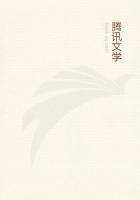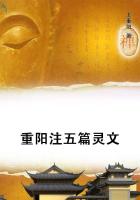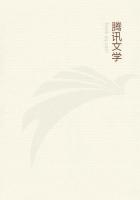Sorely pressed by the barons in 1215, John sought refuge within the castle, and in the same year signed the two charters, Magna Charta and Charta de Foresta, at Runnymede-- a plain between Windsor and Staines.A curious account of his frantic demeanour, after divesting himself of so much power and extending so greatly the liberties of the subject, is given by Holinshed:--"Having acted so far contrary to his mind, the king was right sorrowful in heart, cursed his mother that bare him, and the hour in which he was born; wishing that he had received death by violence of sword or knife instead of natural nourishment.He whetted his teeth, and did bite now on one staff, now on another, as he walked, and oft brake the same in pieces when he had done, and with such disordered behaviour and furious gestures he uttered his grief, that the noblemen very well perceived the inclination of his inward affection concerning these things before the breaking-up of the council, and therefore sore lamented the state of the realm, guessing what would follow of his impatience, and displeasant taking of the matter."The faithless king made an attempt to regain his lost power, and war breaking out afresh in the following year, a numerous army, under the command of William de Nivernois, besieged the castle, which was stoutly defended by Inglehard de Achie and sixty knights.The barons, however, learning that John was marching through Norfolk and Suffolk, and ravaging the country, hastily raised the siege and advanced to meet him.But he avoided them, marched to Stamford and Lincoln, and from thence towards Wales.On his return from this expedition he was seized with the distemper of which he died.
Henry the Third was an ardent encourager of architecture, and his reign marks the second great epoch in the annals of the castle.In 1223eight hundred marks were paid to Engelhard de Cygony, constable of the castle, John le Draper, and William the clerk of Windsor, masters of the works, and others, for repairs and works within the castle;.the latter, it is conjectured, referring to the erection of a new great hall within the lower ward, there being already a hall of small dimensions in the upper court.The windows of the new building were filled with painted glass, and at the upper end, upon a raised dais, was a gilt throne sustaining a statue of the king in his robes.Within this vast and richly decorated chamber, in 1240, on the day of the Nativity, an infinite number of poor persons were collected and fed by the king's command.
During the greater part of Henry's long and eventful reign the works within the castle proceeded with unabated activity.Carpenters were maintained on the royal establishment; the ditch between the hall and the lower ward was repaired; a new kitchen was built; the bridges were repaired with timber procured from the neighbouring forests; certain breaches in the wall facing the garden were stopped; the fortifications were surveyed, and the battlements repaired.At the same time the queen's chamber was painted and wainscoted, and iron bars were placed before the windows of Prince Edward's chamber.In 1240 Henry commenced building an apartment for his own use near the wall of the castle, sixty feet long and twenty-eight high; another apartment for the queen contiguous to it; and a chapel, seventy feet long and twenty-eight feet wide, along the same wall, but with a grassy space between it and the royal apartments.The chapel, as appears from an order to Walter de Grey, Archbishop of York, had a Galilee and a cloister, a lofty wooden roof covered with lead, and a stone turret in front holding three or four bells.Withinside it was made to appear like stone-work with good ceiling and painting, and it contained four gilded images.
This structure is supposed to have been in existence, under the designation of the Old College Church, in the latter part of the reign of Henry the Seventh, by whom it was pulled down to make way for the tomb-house.Traces of its architecture have been discovered by diligent antiquarian research in the south ambulatory of the Dean's Cloister, and in the door behind the altar in St.George's Chapel, the latter of which is conceived to have formed the principal entrance to the older structure, and has been described as exhibiting "one of the most beautiful specimens which time and innovation have respected of the elaborate ornamental work of the period."In 1241 Henry commenced operations upon the outworks of the castle, and the three towers on the western side of the lower ward--now known as the Curfew, the Garter, and the Salisbury Towers--were erected by him.He also continued the walls along the south side of the lower ward, traces of the architecture of the period being discoverable in the inner walls of the houses of the alms-knights as far as the tower now bearing his name.From thence it is concluded that the ramparts ran along the east side of the upper ward to a tower occupying the site of the Wykeham or Winchester Tower.
The three towers at the west end of the lower ward, though much dilapidated, present unquestionable features of the architecture of the thirteenth century.The lower storey of the Curfew Tower, which has been but little altered, consists of a large vaulted chamber, twenty-two feet wide, with walls of nearly thirteen feet in thickness, and having arched recesses terminated by loopholes.The walls are covered with the inscriptions of prisoners who have been confined within it.The Garter Tower, though in a most ruinous condition, exhibits high architectural beauty in its moulded arches and corbelled passages.
The Salisbury Tower retains only externally, and on the side towards the town, its original aspect.The remains of a fourth tower are discernible in the Governor of the Alms-Knights' Tower; and Henry the Third's Tower, as before observed, completes what remains of the original chain of fortifications.

